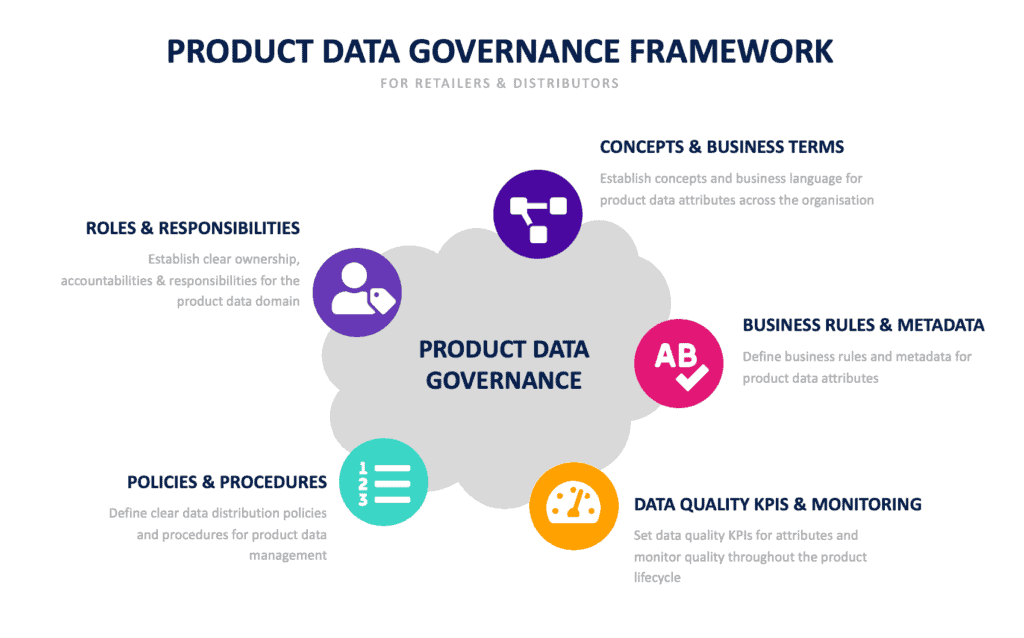We can’t overemphasise the value of a well-thought-out and strategically executed product data governance framework. The end point enhances the following;
- The establishment, monitoring and maintenance of best practices and guiding principles for product data governance.
- Execution of these processes coherently.
- Consistent delivery on the aims of the framework.
As data volume increases and access needs scaling, achieving the above becomes more complex. That’s why it’s important to act with purpose to establish a suitable data governance strategy.
